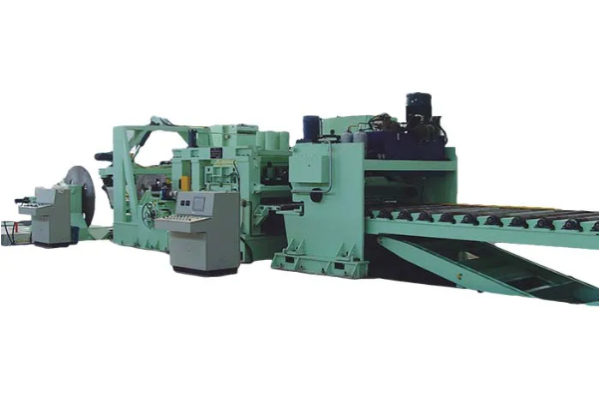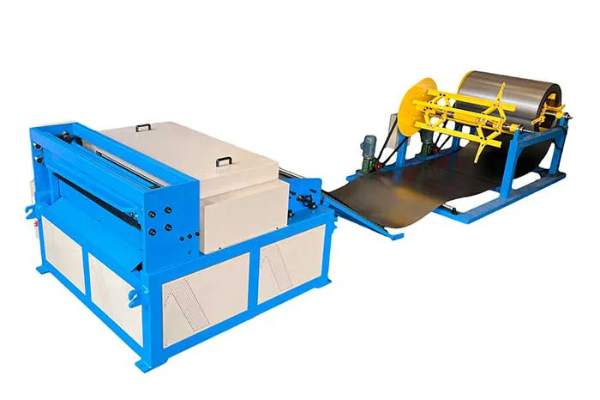
A Comprehensive Overview of Sheet Shearing Machine Operation
- By:Metmac
- 2024-08-14
- 130
Sheet shearing machines are essential in various metalworking industries, enabling precise and efficient cutting of sheet metal. “A Comprehensive Overview of Sheet Shearing Machine Operation” provides a comprehensive guide to operating these machines safely and effectively.
Factors Influencing Sheet Shearing
Several factors influence the quality and efficiency of sheet shearing, including:
Sheet Thickness: Thicker sheets require more force and a wider blade gap.
Material Properties: Different materials, such as aluminum, steel, and stainless steel, have varying shear strengths.
Blade Sharpness: Sharp blades ensure clean and precise cuts, while dull blades can lead to excessive deformation.
Blade Gap: The gap between the blades determines the amount of material cut and the cut quality.
Machine Components and Functions
Sheet shearing machines consist of:
Shear Head: Houses the upper and lower blades that perform the cutting action.
Hold-Down Mechanism: Clamps the sheet metal in place during shearing to prevent movement.
Back Gauge: Positions the sheet metal for accurate cuts.
Control System: Manages the machine’s operation, including blade speed, stroke length, and hold-down force.
Operation and Safety Procedures
Safe and effective operation of sheet shearing machines requires adherence to proper procedures:
Pre-Operation Checks: Inspect the machine for damage, ensure blade sharpness, and adjust the blade gap correctly.
Material Preparation: Place the sheet metal securely on the machine bed and align it using the back gauge.
Shearing: Engage the hold-down mechanism and activate the shearing cycle. Monitor the cut quality and make adjustments as needed.
Post-Operation: Release the hold-down mechanism, remove the cut pieces, and clean the machine to prevent buildup.
Maintenance and Troubleshooting
Regular maintenance is crucial for optimal machine performance:
Blade Maintenance: Regularly inspect blades for wear and tear, and sharpen or replace them as necessary.
Lubrication: Lubricate all moving parts to reduce wear and tear.
Safety Inspections: Perform periodic safety inspections to identify potential hazards and ensure compliance with regulations.
Troubleshooting common machine issues can help prevent downtime:
Blade Misalignment: Adjust the blade gap or replace the blades to correct misalignment.
Poor Cut Quality: Inspect for blade sharpness, correct blade gap, or adjust hold-down force.
Excessive Noise: Identify any loose components or misaligned parts and correct them.
Conclusion
Understanding the operation of sheet shearing machines, including the influencing factors, machine components, and safety procedures, is essential for efficient and safe metalworking. By following proper practices and maintaining the machine regularly, operators can achieve optimal performance, minimize downtime, and ensure workplace safety.
-
Reliable Sheet Metal Equipment for Sale to Support Precision Fabrication
2025/07/17 -
Advanced Duct Machine AC and Fabrication Solutions from Metmac
2025/07/12 -
The Advantages of Using a Sheet Roll Forming Machine in Manufacturing
2024/09/14 -
How to Optimize Your Laser Sheet Cutting Machine for Maximum Performance
2024/09/12
-
Choosing the Right Sheet Metal Laser Cutting Machine: Price, Manufacturers, and Options for Sale
2025/08/04 -
Efficient Fabrication with Sheet Metal Working Machines and Roll Forming Solutions
2025/08/04 -
Advanced Sheet Metal Processing with Laser Stainless Steel Cutting and Hydraulic Sheet Cutting Machines
2025/08/04 -
Precision Sheet Metal Shearing and Forming Machines for Efficient Steel Processing
2025/08/02
-
A Guide to the Latest Innovations in Sheet Metal Folding Machines
2024/11/29 -
Key Features to Consider When Investing in a Sheet Metal Folding Machine
2024/11/28 -
Enhancing Precision with Advanced Sheet Metal Folding Machines
2024/11/27 -
How to Choose the Right Sheet Metal Folding Machine for Your Workshop
2024/11/26





